“This longsword is of no ordinary make. Its blade glints red, be it in the light of day or night, and the wolf carved in its pommel makes you shiver when you gaze at it for too long. All the same, it is perfectly balanced and feels comfortably warm in your palm. It would be a waste not to put it to work, right?”
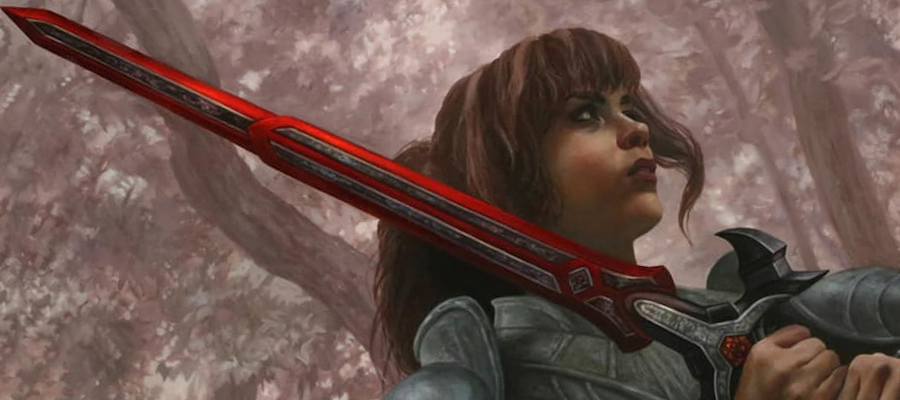
The Crimson Sword is a +1 longsword that once belonged to a vampire noble lady. It is difficult to say if its powers come from its long exposure with its cursed proprietor or enchantment she had someone create to enhance her own terrifying abilities.
Cantrip: Light
“You can use an action to cast “Light” cantrip on the sword at will, but the color of the light is always blood red.”
There are plenty of blades that give a gentle glow or moonlight. This allows them to act as beacons of light and hope in dark circumstances. The idea here was to go in the opposite direction: lighting up this sword, though useful, makes things look even more ominous. Think about the way reddish lighting is used in TV series or movies : it is often the sign that something has gone terribly bad, or is about too.
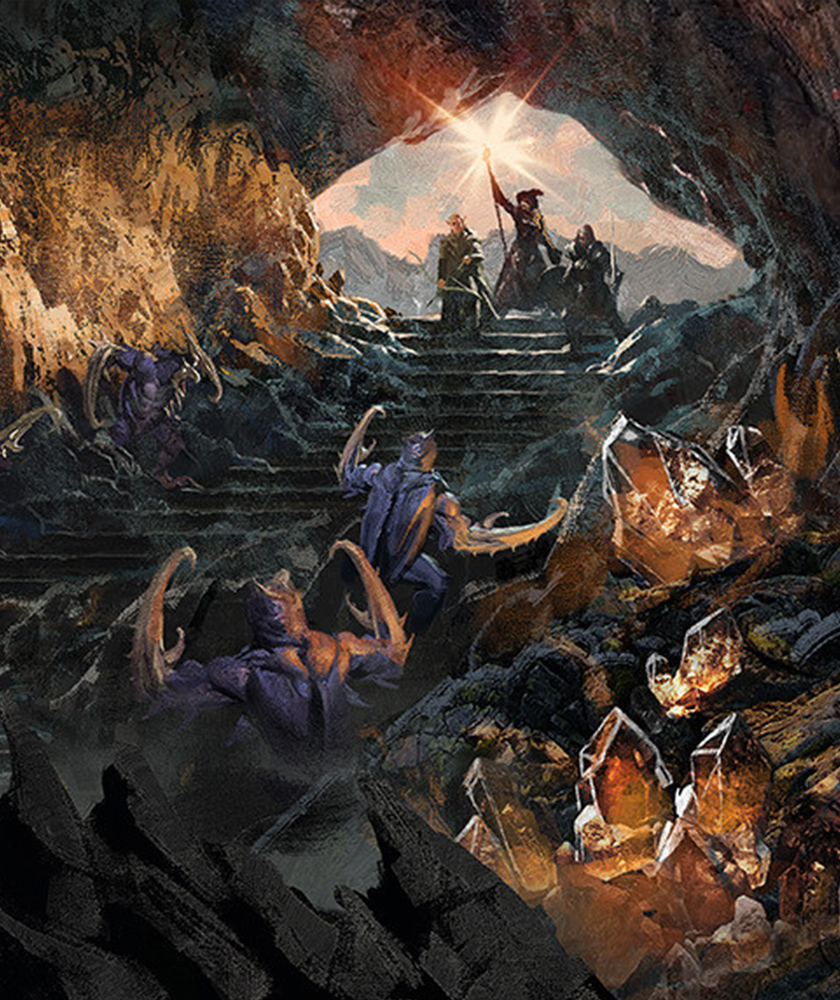
Level 1 spell: False life
“You can use an action to cast the “False life” spell once per day at 1st level.”
There were at least a dozen spells that could work for this one, and could be good alternatives if you’re not a fan of False life. Charm Person or Command could reflect a vampire’s Charm action for instance. Or if you wanted to replace it with a level 2 spell, Misty Step and Spider Climb make lots of sense. But we felt that False life is one of those underused 1st level spells that deserves a little bit of spotlight, while reminding of the Vampire’s Regeneration ability and Bite attack.
Critical hit: Sellable gem
“If you score a critical hit against a creature other than a construct or a plant, the blood spilt creates a scarlet carnelian gem that can be sold for 50 gp.”
I think this is one of the first concepts we came up with when thinking about what could be an unexpected effect of a critical hit. It’s absolutely not combat related, but is visually striking. Also, it’s a way to reflect how precious blood is to vampires. In the hands of a vampire, this sword would be seen as a bit of a waste, now that I think about it…
Extra damages: Divine spellcasters
“You deal 2d6 extra necrotic damage against humanoids who use any kind of divine magic.”
This one took us a little time to figure out. For a moment, we considered water elementals because of the whole “Harmed by running water”. But in the end, a vampire’s truest enemies are the holy persons who are able to harm them with holy water or magical sunlight. Clerics, paladins, priests… If the player encounters any magic user whose abilities comes from a divinity, whoever this divinity may be, well, they better watch out!
Destruction: Vampire Spawn Invocation
“You can use an action to destroy the sword by using the command word “Cassindra”. This will summon a Vampire Spawn in an unoccupied space in a 60 feet range. She disappears when she drops to 0 hit points or after an hour. She is friendly to you and your companions, and has her own turns. She obeys any verbal commands that you issue to her (no action required by you). If you don’t issue any commands to her, she defends herself from hostile creatures, but otherwise takes no actions.”
As stated above, the concept for this sword was that it used to belong to a vampire. And what would a vampire do if they were in a dire situation ? Why, invoke one of their spawns of course! It is for you, the Dungeon Master, to decide whether Cassindra is the name of the spawn or its mistress, and how she will react to a player being in possession of the sword. But more on that below!
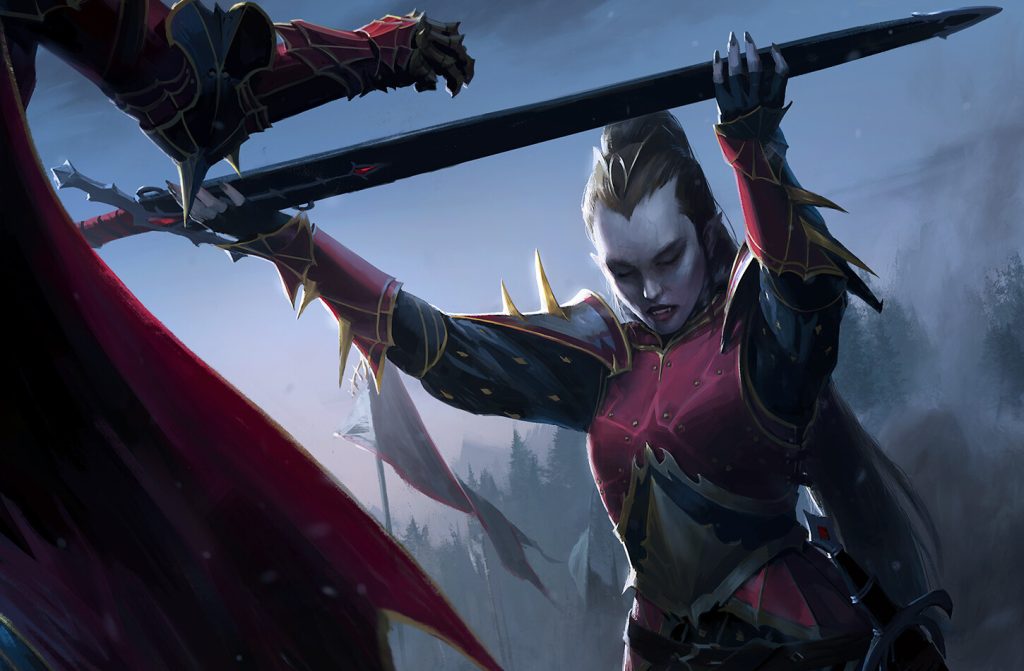
Roleplay: Vampiric Parlay
“You have advantage on Charisma checks to ask for parlay with any vampiric creature.”
This one was quite tricky. Vampires and vampire spawns are creatures that can reason, but are often portrayed as passionate to the point of rashness. Charismatic and grown wiser with age, they seem difficult to intimidate, deceive or even persuade. But sporting a blade that once belonged to one of them? That might let them wonder how the player acquired it, and if they’re more than either their next meal or a direct threat.
Curse: Blood Thirst
“This longword is cursed, a fact that is revealed only when an identify spell is cast on the sword or you attune to it. Becoming attuned to it extends the curse to you. As long as you remain cursed, you are unwilling to part with the longword, keeping it within reach at all times. The longsword must taste blood once per day to retain all its magical properties. If it has not hit a creature by sunset (notwithstanding artificial creatures and plants), its bearer can choose to inflict themselves 1d4 slashing damage. If the longsword does not drink blood, it still counts as a magical weapon, but has no bonus to attack and damage rolls, nor any other magical property.”
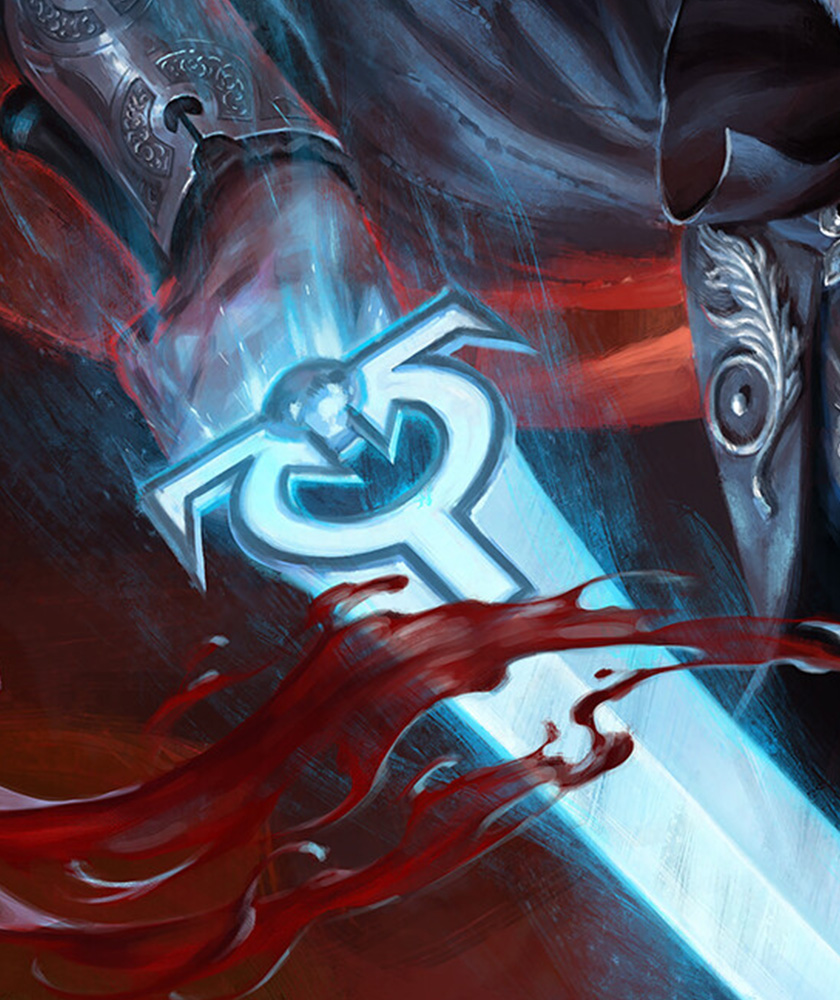
Part of the inspiration for this one is the famous Blood Hunter class, created by Matthew Mercer, as well as another creation from Campaign 1 of Critical Role: Craven Edge. Though that blade’s powers were very different, its personality seemed to always crave the taste of blood. And how appropriate for the weapon itself to be a vampire in its own way!
How to introduce this item?
There are plenty of ways for your players to get their hands on this blade, but here are a few suggestions.
- As loot from a vampire, a vampire spawn or a vampire hunter. Are they the sword’s true owner? Were they given it or did they steal it ?
- As something the players found in a tomb, or any creepy place that could be the vampire’s place of rest.
- As the blade a rival adventurer would be happy to sell, trade for or lose at cards.
What could this item lead to?
This sword could lead to a large range of quests, especially if the players get to meet the vampire spawn bound to it, whether because they destroyed the blade, or the spawn came to them. Here are a few ideas.
- The vampire spawn wants to be free of their former mistress, or even seek revenge on the one who bestowed her such a heavy curse. She knows where her resting place is, and how to destroy it. Depending on the level of the characters, this might become a stealth mission (getting in and out of the absent vampire’s lair, without encountering the monster) or an adventure culminating in the fight against the undead lady.
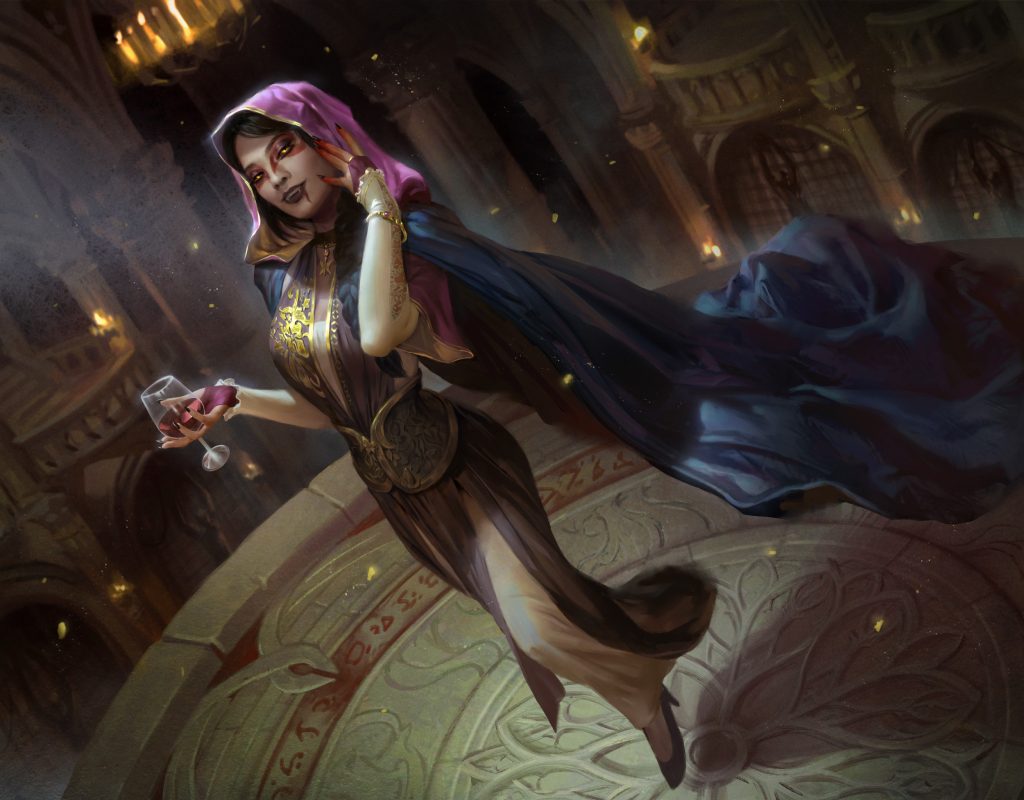
- The sword’s previous owner appears one night, intent on retrieving her blade. Whether the vampire had lost it or gotten rid of it, she now needs it, for reasons that might lead the characters to help her or hinder her.
- The vampire lady is long dead. Her spawn wants the sword to lay with her remains, despite the fact that it will be difficult to reach her tomb. Whether it is guarded by a holy order, the creature that killed the vampire, or traps designed to keep undead at bay, she promises to pay the player with gold, services or a weapon of at least equal value.
The complete item card
Crimson Sword
Weapon (longsword), uncommon (up to 3 properties) or rare (up to 7 properties) (requires attunement)
You gain a +1 bonus to attack and damage rolls made with this magic weapon. In addition, the weapon has one to seven of the following properties:
- You can use an action to cast “Light” cantrip on the sword at will, but the color of the light is always blood red.
- You can use an action to cast the “False life” spell once per day at 1st level.
- If you score a critical hit against a creature other than a construct or a plant, the blood spilt creates a scarlet carnelian gem that can be sold for 50 gp.
- You deal 2d6 extra necrotic damage against humanoids who use any kind of divine magic.
- You can use an action to destroy the sword by using the command word “Cassindra”. This will summon a Vampire Spawn in an unoccupied space in a 60 feet range. She disappears when she drops to 0 hit points or after an hour. She is friendly to you and your companions, and has her own turns. She obeys any verbal commands that you issue to her (no action required by you). If you don’t issue any commands to her, she defends herself from hostile creatures, but otherwise takes no actions.
- You have advantage on Charisma checks to ask for parlay with any vampiric creature.
- Curse. This longword is cursed, a fact that is revealed only when an identify spell is cast on the sword or you attune to it. Becoming attuned to it extends the curse to you. As long as you remain cursed, you are unwilling to part with the longword, keeping it within reach at all times. The longsword must taste blood once per day to retain all its magical properties. If it has not hit a creature by sunset (notwithstanding constructs and plants), its bearer can choose to inflict themselves 1d4 slashing damage. If the longsword does not drink blood, it still counts as a magical weapon, but has no bonus to attack and damage rolls, nor any other magical property.
Image credits
- Vorpal Sword Variant, Alessandra Pisano
- Adventure of Icespire Peak DM Screen, Greg Rutkowski
- Sapphire blue mineral background, unknown
- Bloodsworn Squire, Darren Tan
- Odric Blood-Cursed, Anna Pavleeva
- Henrika Domnathi, Billy Christian
